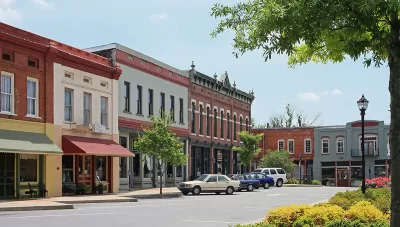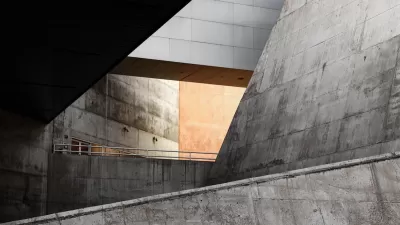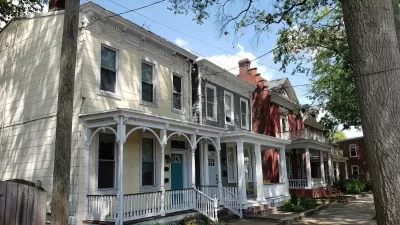Charles Marohn assesses some of the economic benefits of traditional commercial development as compared to those of auto-oriented commercial development.

In a recent piece on The American Conservative, Charles Marohn looks at his hometown of Brainerd, Minnesota to compare the economic benefits the city received from different styles of development along a single commercial corridor—three blocks originally built up in "the traditional style, with the single-story buildings pulled up to the street presenting a dilapidated front to the passing traffic."
A recent local government measure entirely changed a proximate block into an "auto-oriented" development, i.e., a drive through taco restaurant. In a comparison of total value though, the new taco joint totals $618,5000, while the dilapidated structures are valued at $1,104,500, providing the city 79 percent more in tax base revenues than the new drive through.
Marohn asks, "How is it that a collection of tiny shacks built nearly a century ago are worth so much more than the brand new development on the same acreage just up the street? The answer is revealed over and over and over and over and over again when one looks at the financial productivity of different land use patterns: the traditional development approach is a cash cow. On a per-foot or per-acre basis, it is vastly more productive financially than anything being built in an auto-orientation. Taxpayers get far greater returns when places are scaled to people instead of cars."
Marohn goes on to discuss some of the current limitations in building traditional commercial development in Brainerd and other cities in the United States.
FULL STORY: Traditional Development Is a Municipal Gold Mine

Manufactured Crisis: Losing the Nation’s Largest Source of Unsubsidized Affordable Housing
Manufactured housing communities have long been an affordable housing option for millions of people living in the U.S., but that affordability is disappearing rapidly. How did we get here?

Americans May Be Stuck — But Why?
Americans are moving a lot less than they once did, and that is a problem. While Yoni Applebaum, in his highly-publicized article Stuck, gets the reasons badly wrong, it's still important to ask: why are we moving so much less than before?

Using Old Oil and Gas Wells for Green Energy Storage
Penn State researchers have found that repurposing abandoned oil and gas wells for geothermal-assisted compressed-air energy storage can boost efficiency, reduce environmental risks, and support clean energy and job transitions.

Updating LA’s Tree Rules Could Bring More Shade to Underserved Neighborhoods
A new USC study finds that relaxing Los Angeles’ outdated tree planting guidelines could significantly expand urban tree canopy and reduce shade disparities in lower-income neighborhoods, though infrastructure investments are also needed.

California's Canal Solar Projects Aim to Conserve Resources and Expand Clean Energy
California’s Project Nexus has begun generating electricity from solar panels installed over irrigation canals, with researchers and state agencies exploring statewide expansion to conserve water and boost clean energy production.

HHS Staff Cuts Gut Energy Assistance Program
The full staff of a federal program that distributes heating and cooling assistance for low-income families was laid off, jeopardizing the program’s operations.
Urban Design for Planners 1: Software Tools
This six-course series explores essential urban design concepts using open source software and equips planners with the tools they need to participate fully in the urban design process.
Planning for Universal Design
Learn the tools for implementing Universal Design in planning regulations.
Heyer Gruel & Associates PA
City of Moreno Valley
Institute for Housing and Urban Development Studies (IHS)
City of Grandview
Harvard GSD Executive Education
Salt Lake City
NYU Wagner Graduate School of Public Service
City of Cambridge, Maryland





























